Peanuts in Virginia
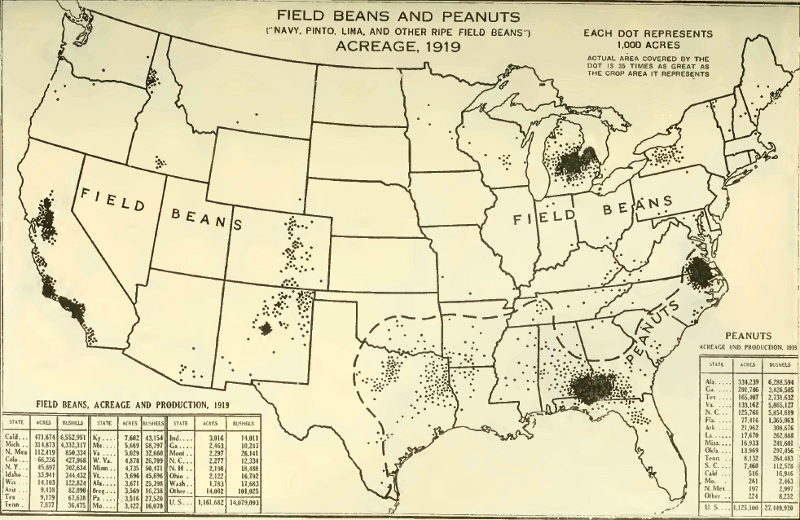
peanut-growing areas in 1919
Source: Baker, O. E., A Graphic Summary of American Agriculture, Based Largely on the Census of 1920, Publication 878, separate from Yearbook of the Department of Agriculture, 1921, Government Printing Office, 1922 (p.49)
Peanuts are a hybrid of two wild ancestral species, with a complicated hypercomplex tetraploid genome. Peanuts originated in in South America, domesticated there by early agriculturalists.
Seeds of peanut plants grow underground, so they do not move naturally. Transport of peanuts to new fields required the intervention of farmers. After the arrival of the Spanish, the plants became part of the Columbian Exchange of food crops that migrated to Europe, Africa and Asia. Peanuts moved east along with potatoes, tomatoes, chili peppers, cacao, and pineapples, while diseases moved into the New World.1
In 2017, the Census of Agriculture reported peanuts were harvested in nine Virginia jurisdictions - Brunswick, Dinwiddie, Greensville, Isle Of Wight, Prince George, Southampton, Surry, and Sussex counties plus the City of Suffolk.2
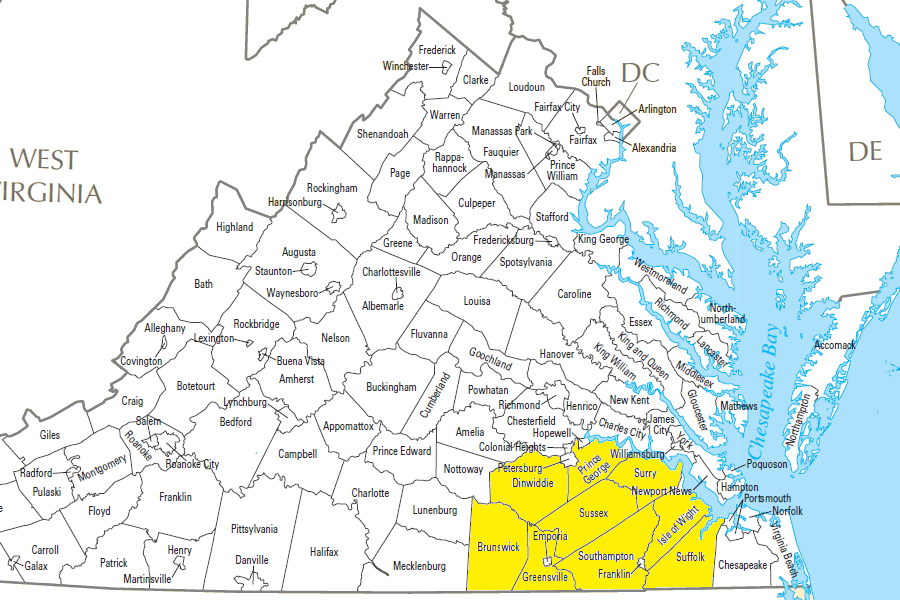
nine jurisdictions reported harvest of peanut acreage in the 2017 Census of Agriculture
Source: US Geological Survey (USGS) National Atlas, County Map
Peanuts are processed as well as grown in Virginia. The minimum processing is to just boil the peanuts in brine and serve to customers in restaurants and at roadside stands.
Suffolk is famed as the home of Mr. Peanut, the marketing symbol of Planters Peanuts. Amedeo Obici started the company in 1906 with a partner in Wilkes-Barre, Pennsylvania. In 1913 he built a processing plant in Suffolk.
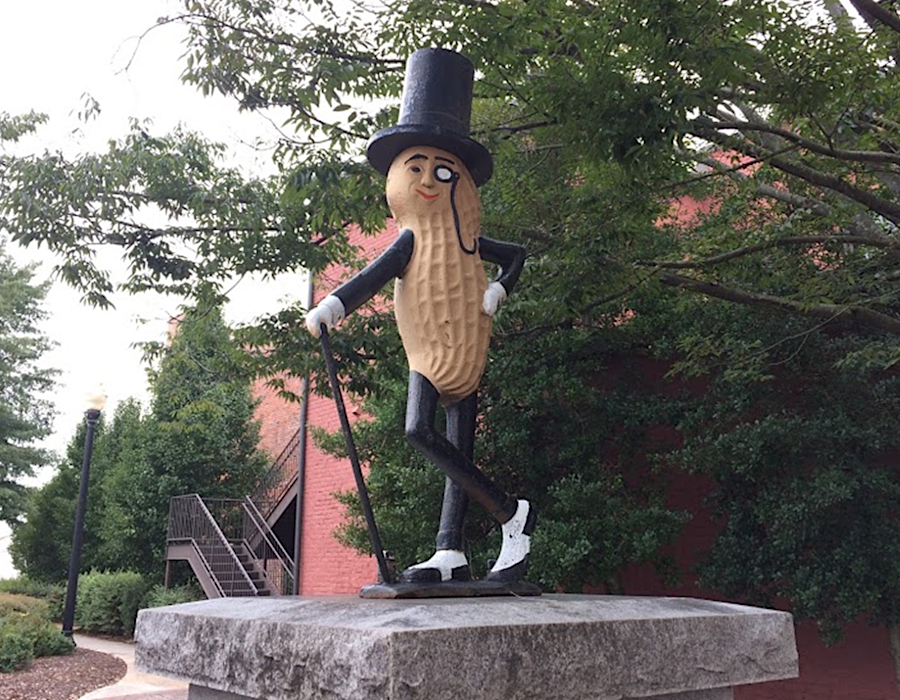
a statue of Mr. Peanut is in downtown Suffolk
The company adopted the Mr. Peanut brand image in 1916, after a local student submitted the winning image. The sophisticated top hat, monocle, and cane were added later by a commercial artist. Officially, Mr. Peanut was Bartholomew Richard Fitzgerald-Smythe.
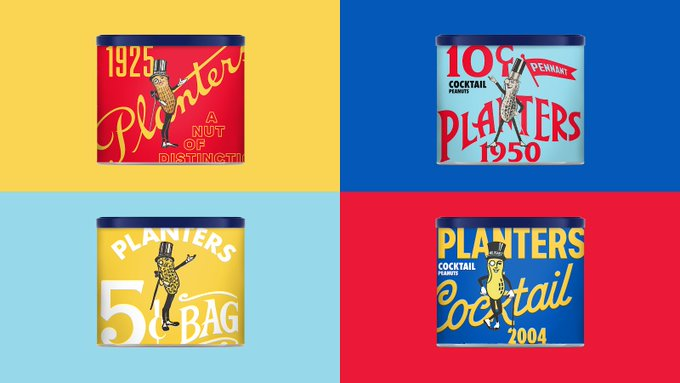
Mr. Peanut was adopted as marketing symbol in 1916
Source: Planters Peanuts, The Estate of Mr. Peanut
The less-famous Nutmobile was created in 1999.3
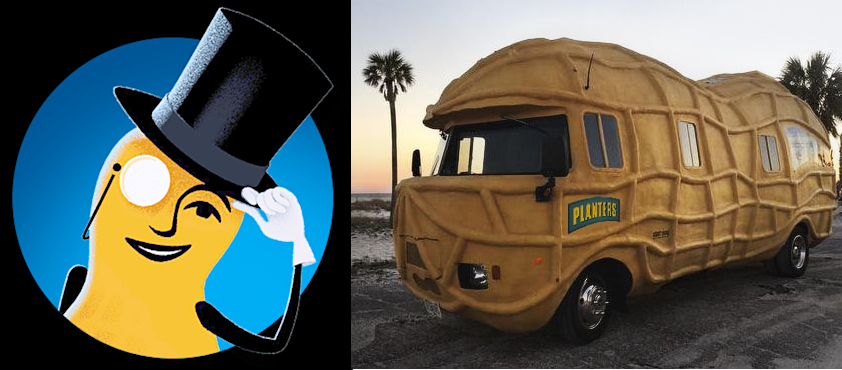
the Nutmobile was created in 1999
Source: Planters Peanuts, Get To Know Mr. Peanut
In a marketing move, the company used an advertisement before the 2020 Super Bowl to kill off Mr. Peanut. After he drove off a cliff in the "Nutmobile" to avoid an armadillo, he and his passengers were left clinging to a branch which could not support the weight of all of them. Mr. Peanut let go, sacrificing himself to save the others.
In Suffolk, "grieving" citizens pile up flowers, candles, and bags of peanuts and other memorabilia at the base of a statue of Mr. Peanut. In reference to his end, the mayor predicted that the company would find a way to bring Mr. Peanut back because "he's not going to leave his friends hanging on a limb."
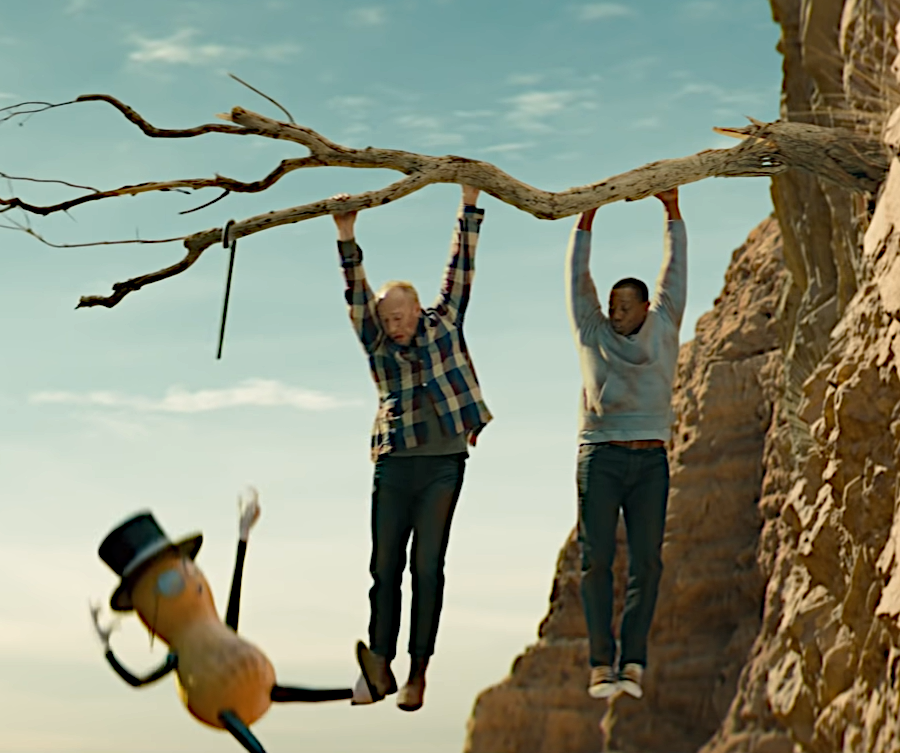
Mr. Peanut supposedly sacrificed himself to save friends, in a 2020 marketing campaign
Source: Planters Peanuts, 2020 Big Game Commercial
Another local resident commented:4
- It’s just a Suffolk thing... If you were born and raised in Suffolk, Mr. Peanut was everything.
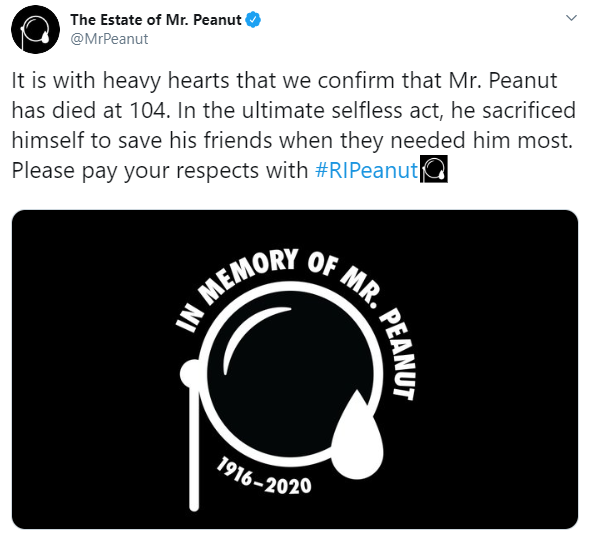
Mr. Peanut was sacrificed in a marketing initiative, advertised during the 2020 Superbowl
Source: Twitter, The Estate of Mr. Peanut
As anticipated, Mr. Peanut was resurrected (as BabyNut) during a Super Bowl commercial.
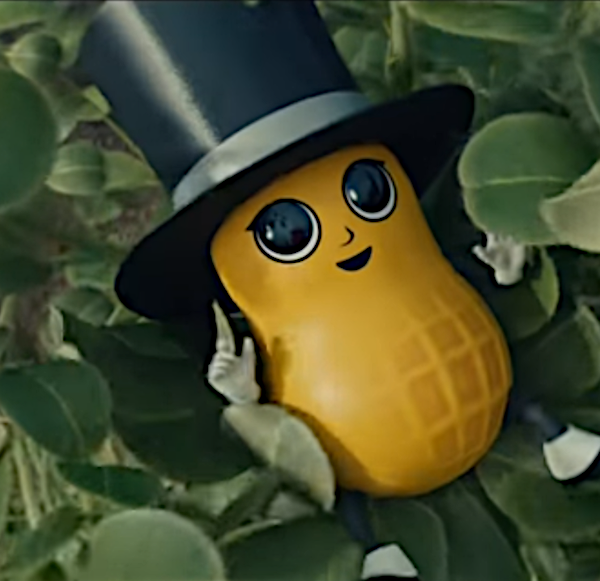
Mr. Peanut, symbol of Suffolk as well as Planters Peanuts, returned in the 2020 Super Bowl
Source: Planters Peanuts, Tribute - 2020 Big Game Commercial
One of the Hershey's eight US candy manufacturing plants is at Stuarts Draft in Augusta County, where the company makes Mr. Goodbars, Almond Joys and Reese's Peanut Butter Cups. In 2019, the company announced an expansion there to build the "Hershey Peanut Roasting Center of Excellence," increasing the capacity to cook peanuts and make Reese's Peanut Butter Cups.5
Links
References
1. Nathan Nunn, Nancy Qian, "The Columbian Exchange: A History of Disease, Food, and Ideas," Journal of Economic Perspectives, Volume 24, Number 2 (Spring 2010), https://scholar.harvard.edu/files/nunn/files/nunn_qian_jep_2010.pdf; "UGA researchers help identify 'the mother of peanut'," University of Georgia, May 1, 2019, http://newswire.caes.uga.edu/story.html?storyid=7952&story=Mother-of-Peanut (last checked May 7, 2019)
2. "Census of Agriculture - QuckStats," National Agricultural Statistics Service, US Department of Agriculture, 2017, https://quickstats.nass.usda.gov/results/3BBDD2D4-16B1-3008-BC12-ED1A340D3855 (last checked January 22, 2020)
3. "Planters Through the Years," Planters Peanuts, https://www.planters.com/mr-peanut/planters-through-the-years; "Mr. Peanut had to die," Washington Post, January 23, 2020, https://www.washingtonpost.com/opinions/2020/01/23/mr-peanut-had-die-if-only-be-born-again/ (last checked January 29, 2020)
4. "Mr. Peanut dies in Super Bowl ad so that Planters can sell more peanuts," The Virginian-Pilot, January 22, 2020, https://www.pilotonline.com/business/vp-bz-planters-super-bowl-20200122-nvts6zxml5fmbo5fri37a4lzyy-story.html; "Suffolk responds to Mr. Peanut's demise," Suffolk News-Herald, January 24, 2020, https://www.suffolknewsherald.com/2020/01/24/suffolk-responds-to-mr-peanuts-demise/ (last checked February 2, 2020)
5. "Hershey Announce $104M Expansion in Stuarts Draft," Daily News-Record, May 10, 2019, http://www.dnronline.com/business/hershey-announce-m-expansion-in-stuarts-draft/article_cea5e9c4-7dce-56f7-9afe-41c9d6323f9c.html (last checked May 10, 2019)
Virginia Agriculture
Virginia Places







